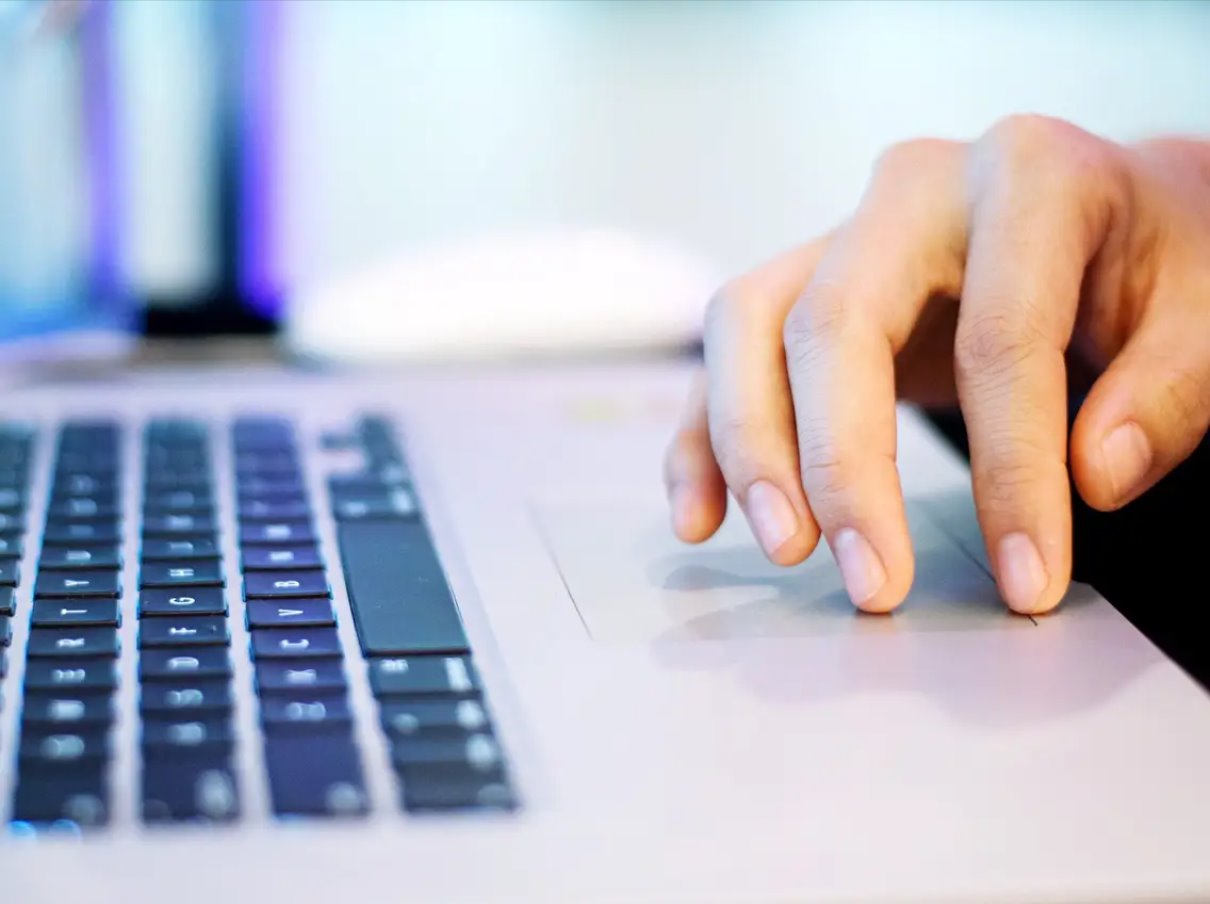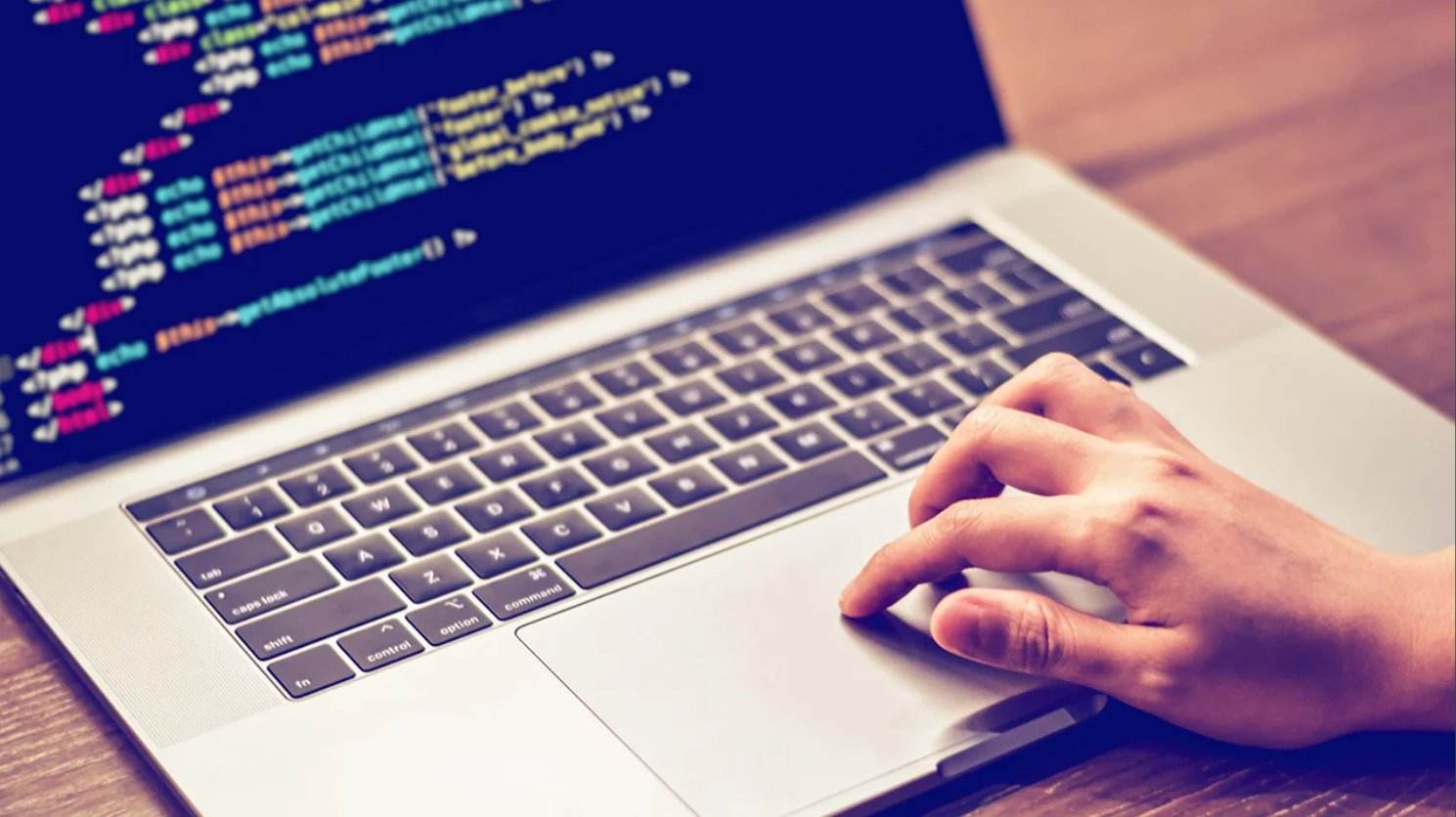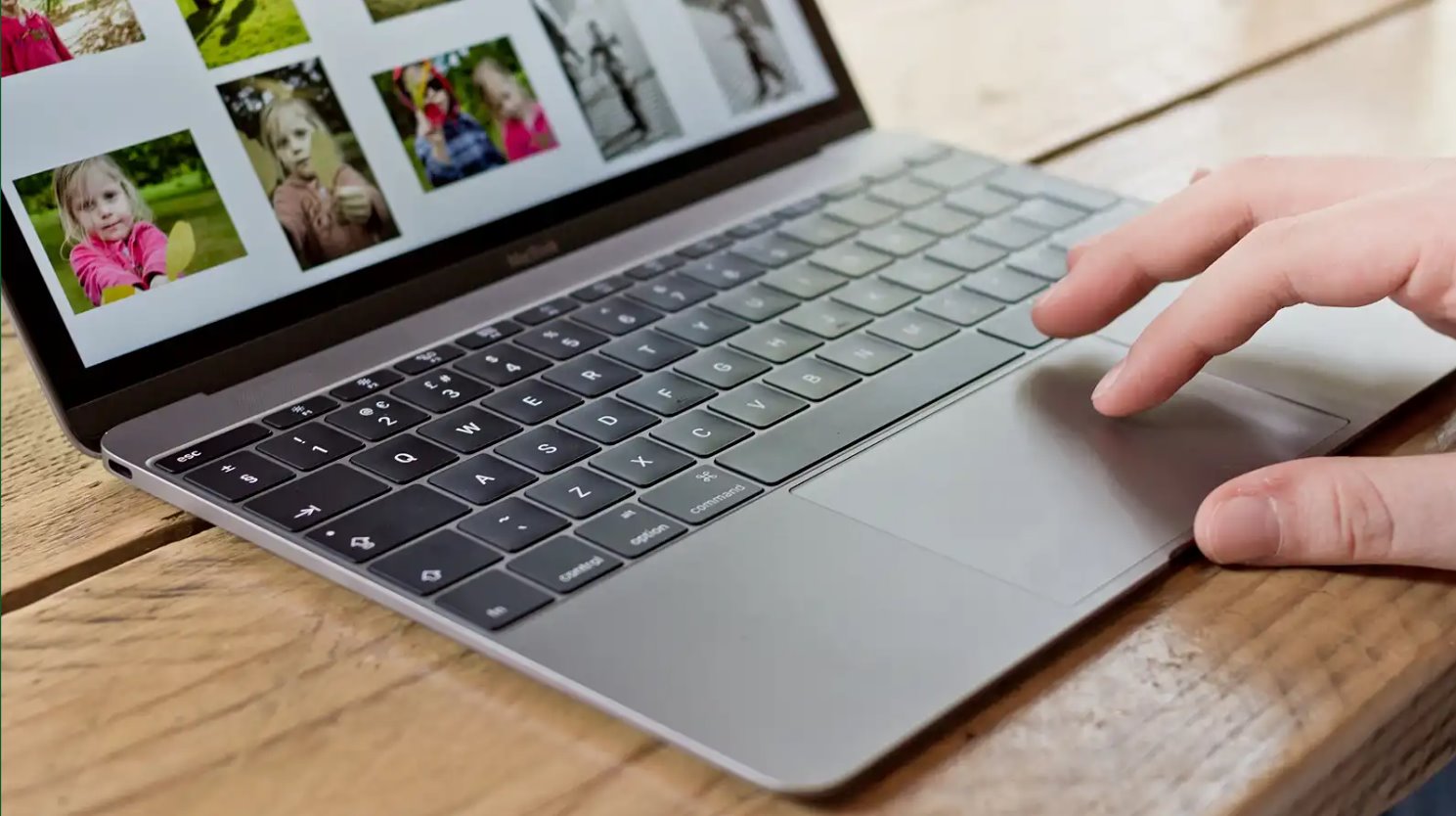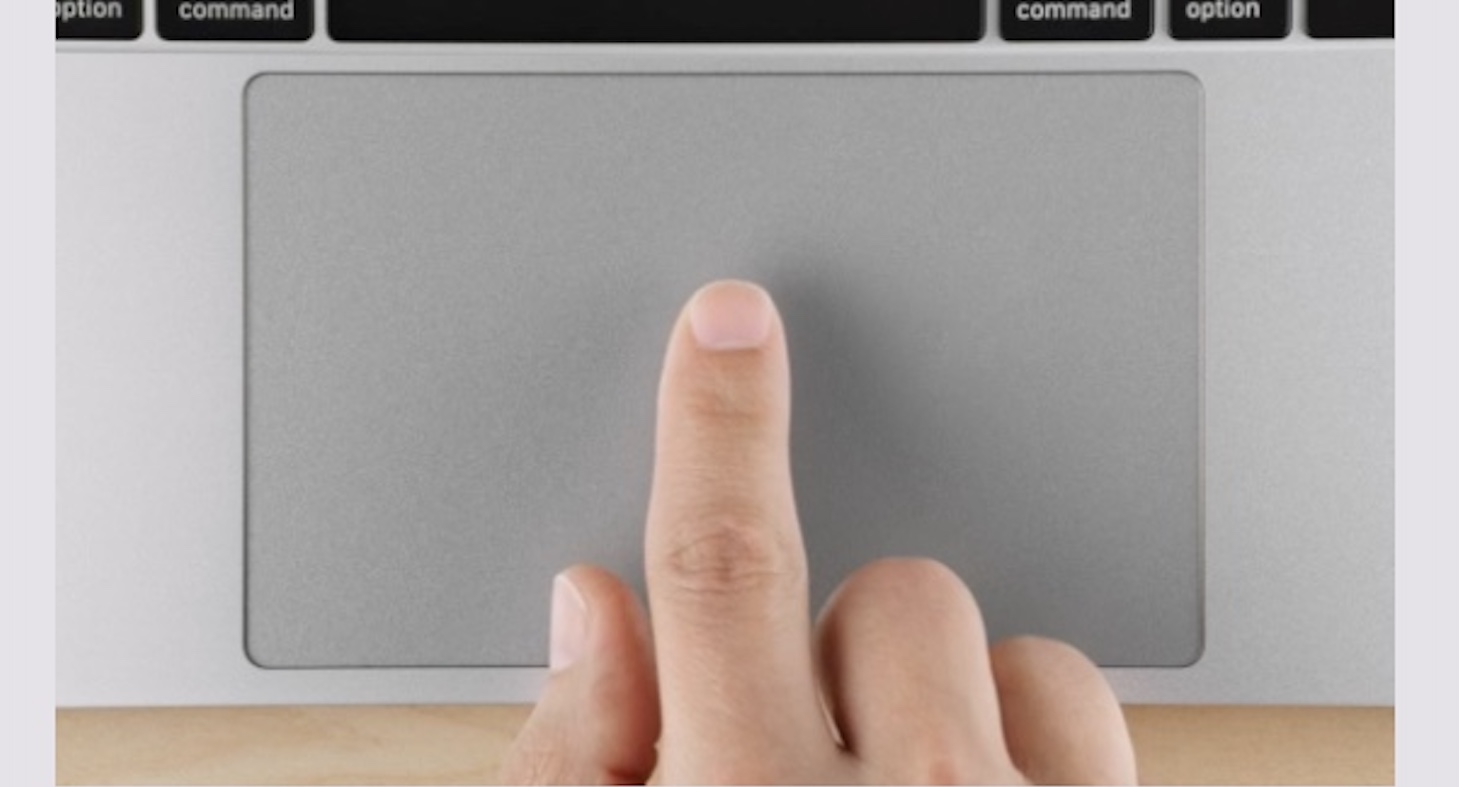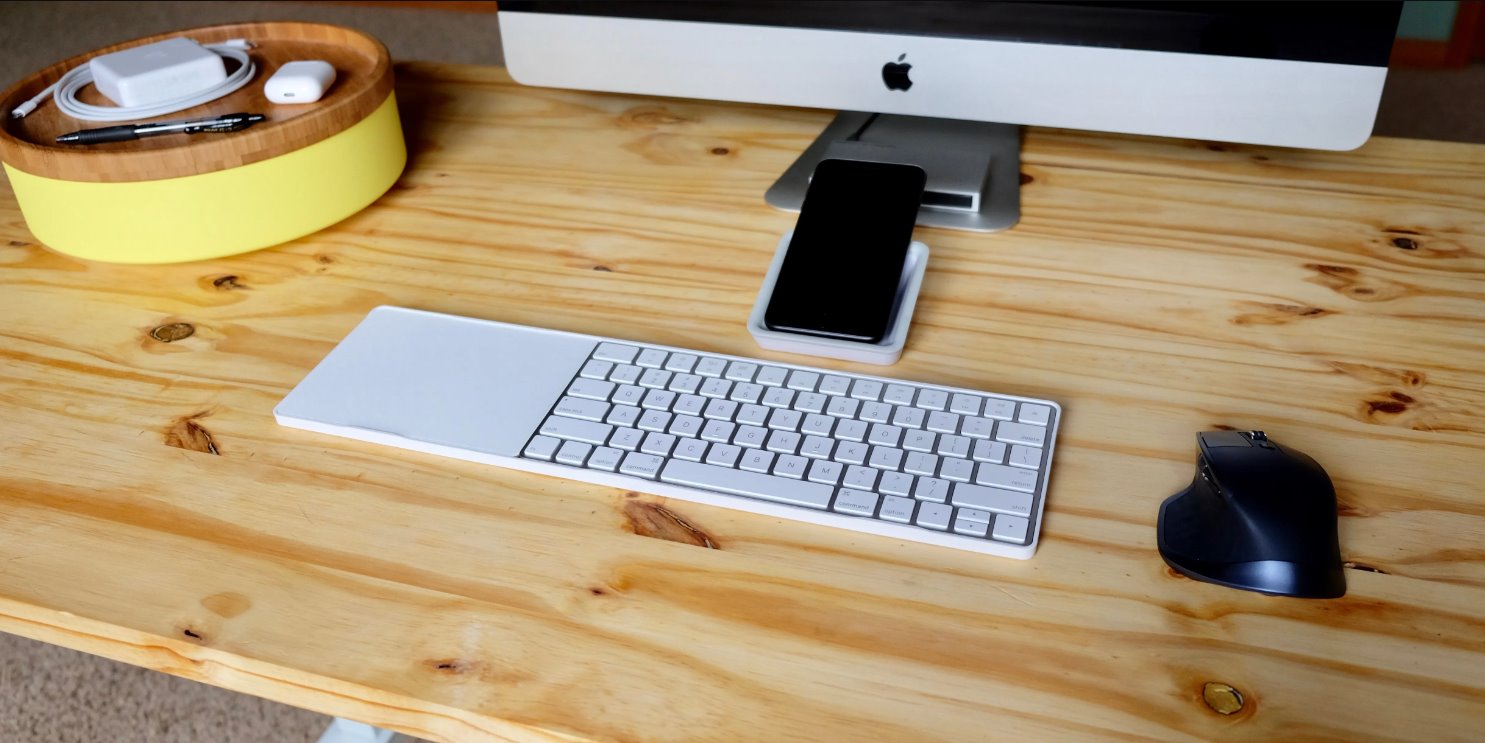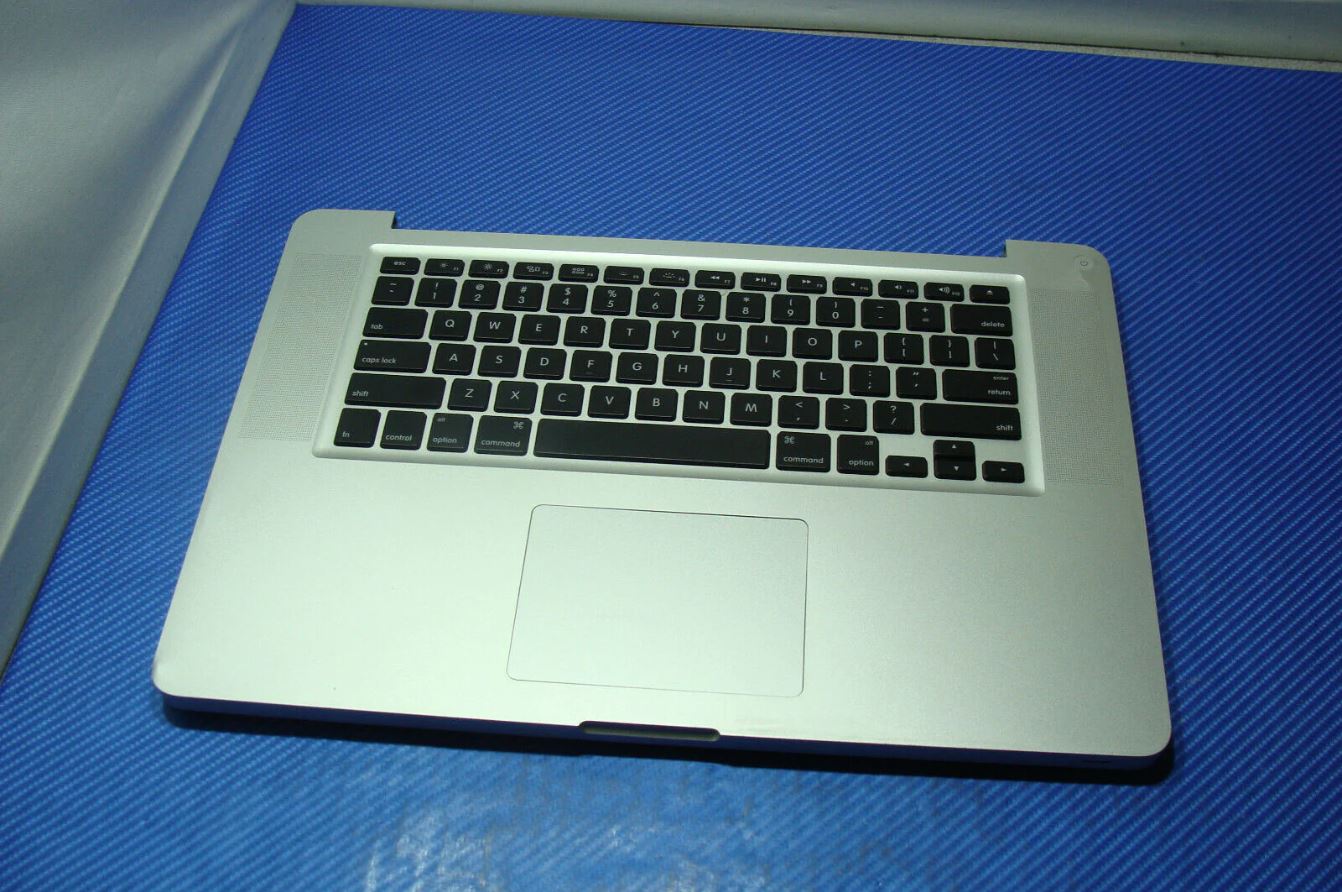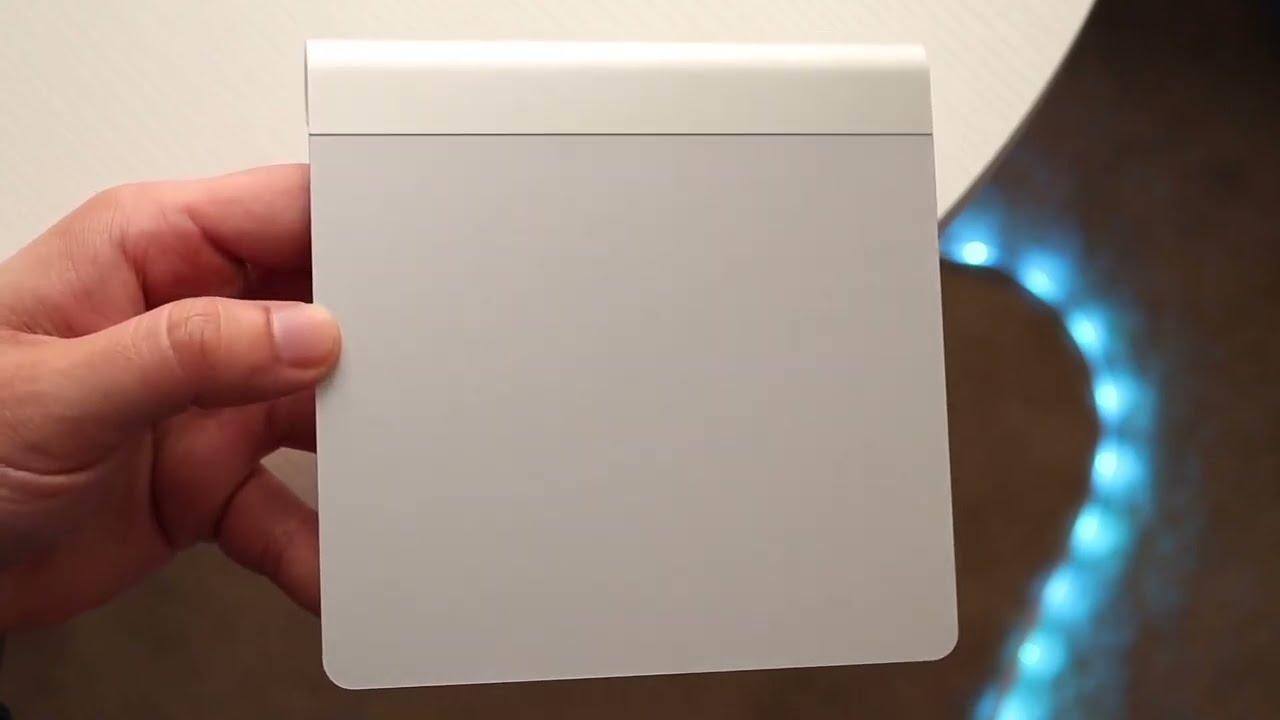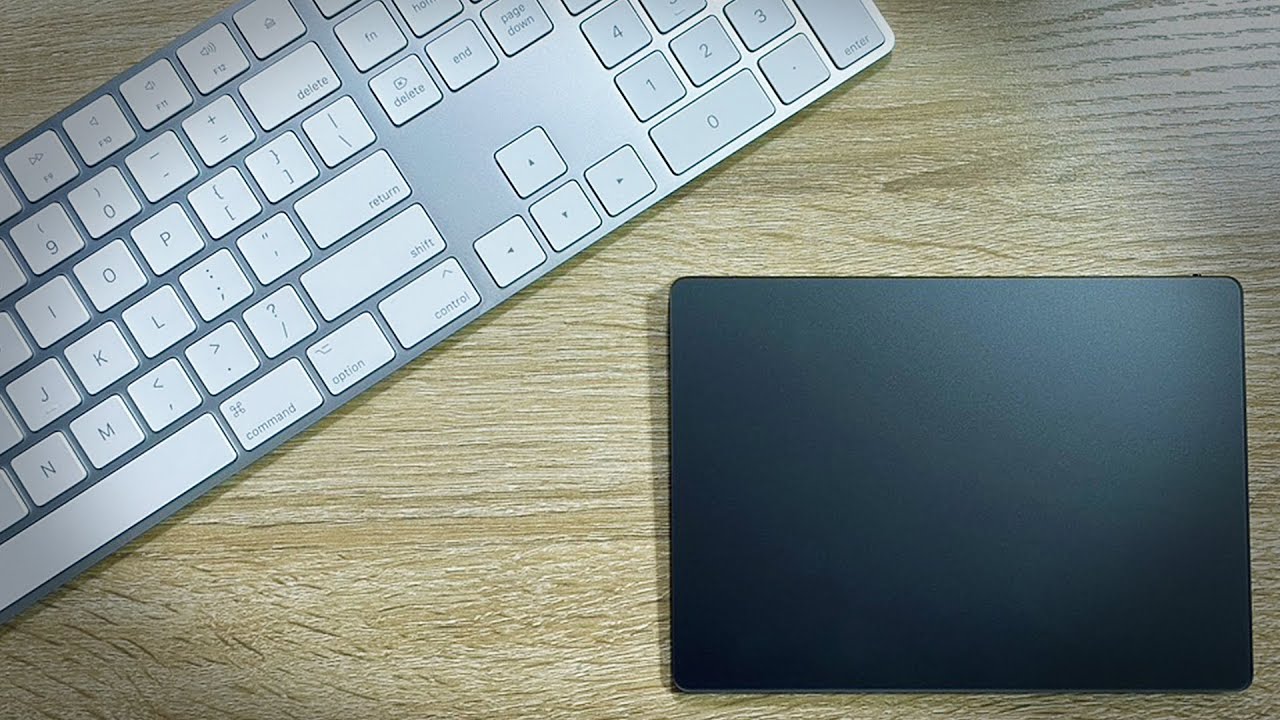Introduction
Welcome to the world of technology, where every device seems to have a unique way of interacting with us. One such device is the trackpad, a common feature found on laptops and some desktop computers. The trackpad has revolutionized the way we navigate and control our devices, providing a convenient alternative to the traditional mouse. Whether you’re a technology enthusiast or a casual user, understanding what a trackpad is and how it works can greatly enhance your computing experience.
A trackpad, also known as a touchpad, is an input device that allows users to control the cursor on a screen by simply touching and sliding their fingers across a specially designed surface. It serves as a substitute for the mouse, providing a more compact and integrated solution for navigating through various applications, documents, and webpages.
Trackpads have become increasingly popular due to their convenience and portability. Unlike a mouse, which requires a flat surface, a trackpad is built directly into the device, allowing users to control their computers with a simple swipe of the finger. This makes trackpads particularly useful for laptops and tablets, where space is often limited.
As technology continues to advance, so do the functionalities and capabilities of trackpads. Today, you can find trackpads with multi-touch support, allowing for gestures like pinch-to-zoom, scrolling, and rotating objects on the screen. These features not only make using a trackpad more intuitive but also provide a more immersive and efficient workflow.
In this article, we will delve into the details of how a trackpad works, the different types of trackpads available, the benefits of using a trackpad, some tips for using it efficiently, and troubleshooting common trackpad issues. So, whether you are a seasoned user or new to trackpads, this article will undoubtedly provide valuable insights and help you make the most out of this versatile and handy input device.
What Is a Trackpad?
A trackpad, short for touchpad, is an input device commonly found on laptops and some desktop computers. It serves as a replacement for the traditional mouse, allowing users to control the cursor on the screen by simply sliding their fingers across a smooth surface. The trackpad is typically located below the keyboard on laptops, while on desktop computers, it can be a separate peripheral.
Unlike a mouse that relies on physical movement on a flat surface, a trackpad uses capacitive sensing technology to detect the touch of a user’s fingers. This touch-sensitive surface can recognize gestures, allowing for a range of actions such as scrolling, zooming, and rotating.
Most modern trackpads are designed with multiple touch points, allowing for advanced gestures and precise control. These gestures include two-finger scrolling, three-finger swiping, and pinch-to-zoom, enabling users to navigate through documents, web pages, and applications more efficiently.
Trackpads often have dedicated areas called buttons, which mimic the left and right buttons found on a mouse. However, some trackpads integrate the button functionality directly on the surface, allowing users to perform left or right-click actions by tapping or pressing down on specific areas of the trackpad.
The tactile feedback of a trackpad can vary depending on the device. Some trackpads provide haptic feedback, which simulates the sensation of physically clicking a button when tapped. This feedback can enhance the user experience, providing a more intuitive and responsive interaction.
Additionally, trackpads can support handwriting recognition, allowing users to write directly on the trackpad with a compatible stylus or their finger. This feature is particularly useful for taking handwritten notes or annotating documents without the need for a dedicated drawing tablet.
Overall, the trackpad offers a convenient and intuitive way to interact with a computer. Its compact size, versatility, and support for a wide range of gestures make it an essential component of many portable devices. The next section will delve into the inner workings of a trackpad, explaining how it translates our finger movements into on-screen actions.
How Does a Trackpad Work?
Understanding how a trackpad works involves delving into its underlying technology and the principles it relies upon to translate our finger movements into on-screen actions. At its core, a trackpad utilizes capacitive sensing and complex algorithms to detect and interpret user input.
The primary component of a trackpad is a grid of capacitive sensors, which are essentially small electrical circuits that can detect changes in electrical charge. When we touch the trackpad, our finger’s electrical charge interacts with the sensor grid, creating a measurable change in capacitance.
As we move our finger across the trackpad, the sensors detect these changes in capacitance and relay the data to a controller chip located within the trackpad. The controller chip analyzes the input and converts it into digital signals that the computer’s operating system can interpret.
These digital signals are then processed by the operating system and translated into corresponding on-screen actions. For example, a swipe of the finger from left to right may trigger the system to scroll horizontally or switch between open applications.
In addition to capacitive sensing, modern trackpads incorporate advanced algorithms and software to enhance accuracy and provide support for various gestures. These algorithms take into account factors such as the speed and direction of finger movements to determine the appropriate action.
Furthermore, some trackpads employ palm rejection technology to prevent accidental inputs. This technology specifically recognizes the difference between intentional touchpad interactions and unintended contact from resting palms or other parts of the hand while typing. By distinguishing between intentional and unintentional touches, the trackpad can minimize errors and enhance user experience.
It is worth noting that different manufacturers may incorporate their unique optimizations and features into their trackpad designs, further enhancing usability and precision. Some high-end trackpads even have force-sensitive feedback, allowing users to apply varying levels of pressure for different actions.
Overall, the trackpad’s intelligent combination of capacitive sensing, algorithms, and software integration enables it to accurately interpret our finger movements and deliver a seamless navigation experience. The next section will explore the different types of trackpads available in the market today.
Types of Trackpads
Trackpads come in various types and designs, each catering to different user preferences and device capabilities. Here are some of the most common types of trackpads:
- Standard Trackpad: This is the most basic type of trackpad, found on most laptops and desktop computers. It typically consists of a smooth surface with left and right buttons at the bottom. Users can control the cursor by sliding their finger across the trackpad and perform clicking actions by pressing the dedicated buttons.
- ClickPad: ClickPads are an evolution of the standard trackpad design, integrating the button functionality directly into the surface. Instead of physical buttons, a ClickPad relies on pressure sensors or touch-sensitive areas on the surface to detect left and right-click actions. ClickPads provide a more seamless and streamlined design, eliminating the need for separate buttons.
- Force Touch Trackpad: Force Touch Trackpads, commonly found on Apple MacBook laptops, introduce pressure sensitivity to trackpad interactions. These trackpads can detect the amount of pressure applied by the user’s fingers, allowing for additional functionality. For example, pressing down with more force can trigger different actions or enable contextual menus.
- Multi-Touch Trackpad: Multi-Touch Trackpads have become increasingly popular, offering support for a wide range of gestures. These trackpads can recognize multiple points of contact simultaneously, enabling actions like pinch-to-zoom, two-finger scrolling, and three-finger swiping. Multi-Touch Trackpads provide a more intuitive and efficient way to interact with applications and navigate through content.
- Gesture-Enabled Trackpad: Gesture-Enabled Trackpads take the capabilities of Multi-Touch Trackpads to the next level. In addition to standard gestures, they offer advanced features such as rotating objects, launching specific applications through custom gestures, and even handwriting recognition. These trackpads provide a highly customizable and personalized user experience.
It’s important to note that trackpad availability and features can vary depending on the device and operating system. Manufacturers may incorporate their unique technologies and optimizations into trackpad designs, further enhancing usability and functionality.
Regardless of the type, a well-designed trackpad can greatly enhance productivity and user experience. Understanding the different types of trackpads available can help users choose the one that best suits their needs and preferences. In the next section, we will explore the numerous benefits of using a trackpad over traditional input devices.
Benefits of Using a Trackpad
Using a trackpad as your primary input device offers a variety of benefits, making it a popular choice for many users. Here are some of the key advantages of using a trackpad:
- Portability: Trackpads are built directly into laptops and are therefore highly portable. This allows users to navigate their devices without the need for an external mouse, making it easier to work on-the-go or in tight spaces.
- Ergonomics: Trackpads promote a more natural hand position compared to a mouse. Instead of gripping and moving a physical device, you can control the cursor by lightly gliding your finger across the trackpad’s surface, reducing strain on your wrists and arms.
- Gesture Support: One of the standout features of trackpads is their support for gestures. With multi-touch and gesture-enabled trackpads, you can perform actions like pinching to zoom in or out, swiping with three fingers to switch between applications, or using swipe gestures to navigate through webpages or documents. This allows for quicker and more intuitive interaction with your device.
- Accurate Navigation: Trackpads offer precise cursor control, allowing you to easily position the cursor exactly where you want it. This accuracy is especially useful for activities such as graphic design, photo editing, or video editing, where precise movements are required.
- Quick Scrolling: Many trackpads support smooth and effortless scrolling with the use of two-finger gestures. Whether you need to scroll through a lengthy document or browse through a webpage, scrolling on a trackpad is usually swift and seamless.
- Convenient Gestures: Along with gesture support, trackpads often have additional convenience gestures available. These gestures can include accessing mission control, launching the app switcher, opening the notification center, or performing specific actions in applications. These shortcuts can save time and streamline your workflow.
- Integration: The trackpad is a tightly integrated part of the laptop, designed to work seamlessly with the operating system and its native applications. This tight integration ensures compatibility and optimized performance, making the trackpad a reliable and efficient input device.
- Less Desk Clutter: Using a trackpad eliminates the need for a separate mouse, reducing the clutter on your desk and freeing up space for other tasks or accessories.
With these advantages, it’s no wonder that trackpads have become the input method of choice for many users. The next section will provide some useful tips for maximizing your productivity and efficiency when using a trackpad.
Tips for Using a Trackpad Efficiently
While trackpads are incredibly versatile and user-friendly, there are a few tips and tricks that can help you make the most out of your trackpad experience. Here are some helpful tips for using a trackpad efficiently:
- Customize Trackpad Settings: Take advantage of the trackpad settings available on your device. Adjust the tracking speed, enable or disable specific gestures, and personalize the settings to your liking. Customizing the trackpad settings can greatly enhance your efficiency and comfort.
- Master Basic Gestures: Familiarize yourself with basic trackpad gestures like two-finger scrolling, pinch-to-zoom, and three-finger swiping. Mastering these gestures will allow you to navigate through applications and content more swiftly.
- Learn Advanced Trackpad Gestures: Explore the advanced gestures available on your trackpad. These can include using four-finger swipes to switch between virtual desktops or using three-finger taps to look up definitions or activate the dictionary. Learning and incorporating these gestures into your workflow can greatly improve your productivity.
- Practice Tap-to-Click: Many trackpads support tap-to-click functionality, allowing you to perform left-click actions by tapping the trackpad. This can be a more efficient and faster way to interact with your device compared to physically pressing the trackpad buttons.
- Utilize Keyboard Shortcuts: Combine the power of your trackpad with keyboard shortcuts to perform tasks more quickly. For example, you can use a three-finger swipe gesture on a selected text to copy and a three-finger swipe in the opposite direction to paste.
- Experiment with Accessibility Features: Explore the accessibility features available on your operating system. Some trackpad gestures can be remapped or customized to suit your specific needs, making it easier for individuals with specific requirements to use a trackpad effectively.
- Use Apps with Trackpad Support: Many applications are optimized to take advantage of trackpad gestures and functionalities. Explore apps that offer trackpad support and utilize these gestures to enhance your productivity within those applications.
- Keep Your Trackpad Clean: Dust, dirt, and oil from your fingers can affect the performance of your trackpad. Regularly clean the trackpad surface with a soft cloth to maintain its responsiveness and accuracy.
- Take Breaks: As with any repetitive task, it’s important to take breaks and give your fingers and hands a rest. Stretching exercises and taking short breaks can help prevent discomfort or strain associated with prolonged trackpad use.
By implementing these tips and incorporating them into your daily workflow, you’ll be able to unleash the full potential of your trackpad and navigate your device with speed and efficiency. In the next section, we will discuss some common trackpad issues and troubleshooting techniques.
Troubleshooting Common Trackpad Issues
While trackpads are generally reliable and user-friendly, occasional issues may arise that can hinder their functionality. Here are some common trackpad issues and troubleshooting techniques to help you resolve them:
- Unresponsive Trackpad: If your trackpad suddenly becomes unresponsive, try restarting your device. Additionally, ensure that your trackpad is not disabled in the system settings. If the issue persists, check for driver updates or consider resetting the trackpad settings to default.
- Jumpy Cursor: A cursor that jumps erratically or moves on its own can be caused by sensitivity settings being too high. Adjust the trackpad sensitivity in the system settings to alleviate this issue. Additionally, clean the trackpad surface to remove any debris that may interfere with the sensor readings.
- Cursor Lag: If you experience cursor lag, check for any resource-intensive applications or background processes that may be affecting your device’s performance. Close unnecessary applications and consider restarting your device to free up system resources.
- Accidental Touches: Resting your palm or other parts of your hand on the trackpad while typing can lead to accidental touches and unintentional cursor movements. Enable palm rejection in the trackpad settings to minimize these unwanted inputs.
- Scrolling Not Working: If scrolling gestures do not work, ensure that scrolling is enabled in the trackpad settings. If the issue persists, try updating the trackpad driver or resetting the trackpad settings to default.
- Unusual Trackpad Behavior: If your trackpad’s behavior becomes unpredictable or inconsistent, it may be due to conflicting software or driver issues. Update your operating system to the latest version and ensure that all trackpad drivers are up to date. If the problem persists, consider contacting technical support for further assistance.
- Physical Damage: If your trackpad has physical damage or has been exposed to liquids, it may require professional repair or replacement. Avoid using the trackpad in this condition to prevent further damage.
- External Factors: Keep in mind that external factors such as temperature, humidity, and electrical interference can affect trackpad performance. Avoid using the trackpad in extreme environments or areas with intense electromagnetic activity.
If you encounter any trackpad issues that cannot be resolved with simple troubleshooting techniques, it’s always advisable to refer to the manufacturer’s support documentation or contact their customer support for further assistance. They will be able to provide tailored solutions to address the specific issues you are facing with your trackpad.
By being aware of these common trackpad issues and having troubleshooting techniques at your disposal, you can quickly and effectively address any trackpad problems that may arise, ensuring a smooth and uninterrupted user experience. Before we wrap up, let’s summarize the key points discussed in this article.
Conclusion
In conclusion, the trackpad is an essential input device that has revolutionized how we interact with our devices. It offers a compact and integrated solution for navigating through applications, documents, and webpages. By understanding how a trackpad works, the different types available, and the benefits it brings, you can make informed decisions when selecting and using a trackpad.
We explored the inner workings of a trackpad, learning about capacitive sensing technology and the complex algorithms behind its functionality. We discussed the various types of trackpads, including standard trackpads, ClickPads, Force Touch Trackpads, Multi-Touch Trackpads, and Gesture-Enabled Trackpads. Each type offers unique features and capabilities to enhance user experience.
We also discussed the benefits of using a trackpad, such as portability, gesture support, accurate navigation, and convenience. Trackpads offer a comfortable and ergonomic alternative to traditional input devices, allowing for precise control and seamless navigation through advanced gestures.
To use a trackpad efficiently, we provided valuable tips, including customizing trackpad settings, mastering basic and advanced gestures, utilizing keyboard shortcuts, and keeping the trackpad clean. These tips can help you maximize productivity and make the most out of your trackpad experience.
In the event of common trackpad issues, we outlined troubleshooting techniques such as checking trackpad settings, updating drivers, managing resource usage, and addressing physical damage. By following these troubleshooting steps, you can resolve most common trackpad problems and maintain optimal functionality.
Overall, the trackpad is a versatile and indispensable tool for navigating and controlling our devices. Whether you are a student, professional, or casual user, understanding the trackpad’s features, mastering its gestures, and troubleshooting common issues can greatly enhance your computing experience.
So embrace your trackpad, unleash its potential, and enjoy the seamless navigation it offers. Whether you’re working on a school project, editing photos, or simply browsing the web, your trackpad will undoubtedly be your reliable companion.







